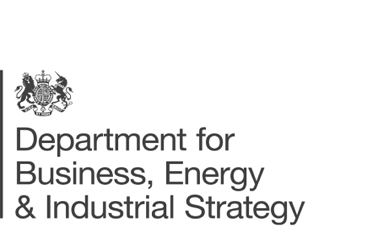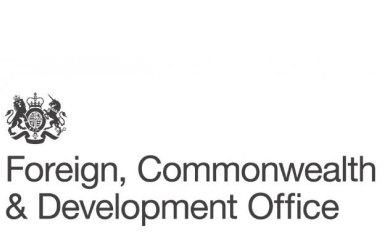This CONPES document formulates a national policy for digital transformation and artificial intelligence. This policy aims to promote the generation of social and economic value in the country through the strategic use of digital technologies in the public sector and the private sector, to boost productivity and promote the well-being of citizens, as well as generating transversal enablers for digital transformation, so that Colombia can take advantage of the opportunities and face the challenges related to the Fourth Industrial Revolution (4IR). Digital transformation of construction is specifically mentioned within section 5.3.2. Create enabling conditions for digital innovation in the public and private sectors, with the purpose of being a mechanism for the development of digital transformation. On page 47 of the policy.
https://colaboracion.dnp.gov.co/CDT/Conpes/Econ%C3%B3micos/3975.pdf*
This capability assessment sets out the actions that government and industry will take to create opportunities for the UK construction sector by becoming a world leader in Building Information Modelling (BIM). We will build on the considerable progress already made in embedding BIM into the domestic sector.
https://www.gov.uk/government/publications/building-information-modelling
Amendments to the laws will allow for the clients to establish requirements and (or) criteria in the procurement documents for the application of BIM methods in cases and in accordance with the procedures established by the Government or its authorized institution.
Amendments are designed to enable the application of Building Information Modelling methods in the design, construction and installation of public sector buildings and objects.
The link to the Amendment of legal act (law) in the Register of Legal Acts (the Register is state-level register for legal acts where all legal acts must be announced):
https://www.e-tar.lt/portal/lt/legalAct/9056d2d0a69111ebbcbbc2971cdac3cb
An archive version of this information article has been created if the original is no longer accessible (Archive information from January 2024)
Amendments to the laws will allow for the clients to establish requirements and (or) criteria in the procurement documents for the application of BIM methods in cases and in accordance with the procedures established by the Government or its authorized institution.
Amendments are designed to enable the application of Building Information Modelling methods in the design, construction and installation of public sector buildings and objects.
The link to the Amendment of legal act (law) in the Register of Legal Acts:
https://www.e-tar.lt/portal/lt/legalAct/c4a41b10a69111ebbcbbc2971cdac3cb
An archive version of this information article has been created if the original is no longer accessible (Archive information from January 2024)
The Goverment of the Republic of Lithuania approved the mandatory application of Building Information Modelling (BIM) methods. Resolution defines the cases (the value of the project, type of construction, type of structure) in which public contracting authorities will have to specify in the procurement documents the requirements and (or) criteria for the application of mandatory BIM methods.Â
The link to the legal act (resolution) in the Register of Legl Acts:
https://www.e-tar.lt/portal/lt/legalAct/cfcdf1b05cb111eca9ac839120d251c4
An archive version of this information article has been created if the original is no longer accessible (Archive information from January 2024)
Prepared by the Ministry of Environment of the Republic of Lithuania, and approved by the Goverment of the Republic of Lithuania.
This document was published on the 20th May 2020 and is the decision of the Government on the mandatory application of BIM methods.
An archive version of this information article has been created if the original is no longer accessible (Archive information from January 2024)
Decision No. 950/QD-TTg is all about the scheme for development of smart sustainable cities in Vietnam. On August 1st, 2018, the Prime Minister issues the Decision No. 950/QD-TTg as part of a move to increase the use of ICT an other digital technologies in order to improve the competitiveness, innovation, creation, transparency, good organizational structure and effective management of city governments, enhance efficiency in use of land, energy and other resources, improve and enhance quality of life in urban environment as well as encourage socioeconomic growth and development.
Several objectives of the smart cities scheme illustrated within this decision notice, working toward 2020 include:
– To formulate the general legal framework for development of smart sustainable cities;
– To formulate the master plan for establishment of national standards serving the development of smart sustainable cities in Vietnam;
– Pilot smart city ICT reference framework in building smart cities, build spatial urban data infrastructure;
– To assist at least 03 new urban areas in investment, construction and pilot application of solutions for smart citiesÂ…
Accordingly, a number of tasks need to be operated such as Apply intelligent technologies; develop smart city infrastructure, utilities and facilities; intensify mobilization of investment and technical support. This Decision takes effect on the signing date.
An English version of the decision is available here: https://english.luatvietnam.vn/decision-no-950-qd-ttg-dated-august-01-2018-of-the-prime-minister-on-approving-the-scheme-for-development-of-smart-sustainable-cities-in-vietnam-in-165701-Doc1.html
The decision notice 942/QD-TTg has been published to develop BIM adoption in Vietnam with an aim to strive to reduce least 20% of administrative procedures of state agencies by 2025. On June 15, 2021, the Government published the Decision No. 942/QD-TTg approving the e-Government development strategy towards the digital Government in the 2021 – 2025 period, with a vision to 2030. The decision also sets targets towards 2025 include: At least 80% of administrative procedure records are processed completely online and people are only required to declare data once; 100% of state agencies provide services 24/7 and are ready to provide online services at any time; 100% of officials have digital identities for work; At least 20% of administrative procedures of state agencies are reduced compared to the current number; Each citizen has a digital identity and QR code, striving so that all citizens have smartphones; etc.
The decision sets out the governments digital strategy and vision with the key tasks in the Strategy being: Researching on and proposing amendments to the Law on E-Transactions and guiding documents; Developing and operating stable, safe and uninterrupted specialized network infrastructure that connects administrative levels from the central to commune level based on specialized data transmission networks; Developing and completing the national public service portal so that people and enterprises can access online public services of ministries, sectors and localities; etc. This Decision takes effect on the signing date.
An English version of the decision is available here: https://english.luatvietnam.vn/decision-no-942-qd-ttg-dated-june-15-2021-of-the-government-approving-the-e-government-development-strategy-towards-the-digital-government-in-the-20-203675-Doc1.html
https://datafile.chinhphu.vn/file-remote-v2/DownloadServlet?filePath=vbpq/2021/06/942.signed.pdf
This decision notice titled ‘The Building Information Models (BIM) for facility building and operating management activitiesÂ’ was approved by the Prime Minister on December 22, 2016 under the Decision No. 2500/QD-TTg. The objectives of this decision are that through the application of BIM, Vietnam can strive to achieve the objective of saving at least 30% of convertible general expenses for entities concerned during such application, enhance transparency and convenience in management and control of quality of facility building and operating management activities. Including: cutting down about 10% of construction cost (including reducing overuse of building materials by approximately 20%); decreasing construction time by about 10% compared with the approved progress; reducing duration of design and design modification by about 10%…
The decision mentions the need to prepare necessary conditions and skill training sessions for the application of BIM, including duties such as improve awareness and encourage entities, institutions or enterprises to implement BIM; outline the legal framework for application of BIM, system of technical regulations, standards or economic and technical norms where relevant; build instructions for BIM and develop the framework for training of knowledge about BIM and make arrangements for providing training to construction authorities exercising their delegated powers. From 2018 to 2020, initiate pilot application of BIM at several projects, including duties such as conduct utilization of BIM in project design, construction and management operations for at least 20 new construction packages ranging from the first to higher level in investment and construction projects financed by the state and other sources (on a voluntary basis); utilize BIM for operation management of at least 10 important projects which are subject to technical complicated requirements and developed by state funds, and from 2021, based on the review and evaluation report on application of BIM, the Ministry of Construction shall introduce the Circular and Detailed Guidance on universal utilization of BIM in facility construction and operating management activities.
https://datafile.chinhphu.vn/file-remote-v2/DownloadServlet?filePath=vbpq/2016/12/2500.signed.pdf
#SPILL!


